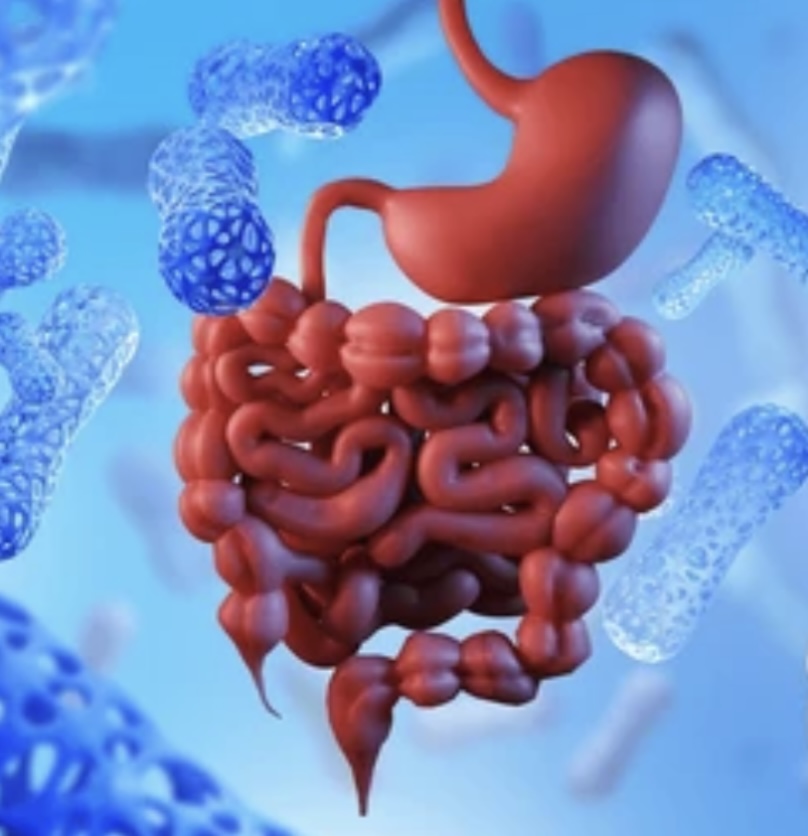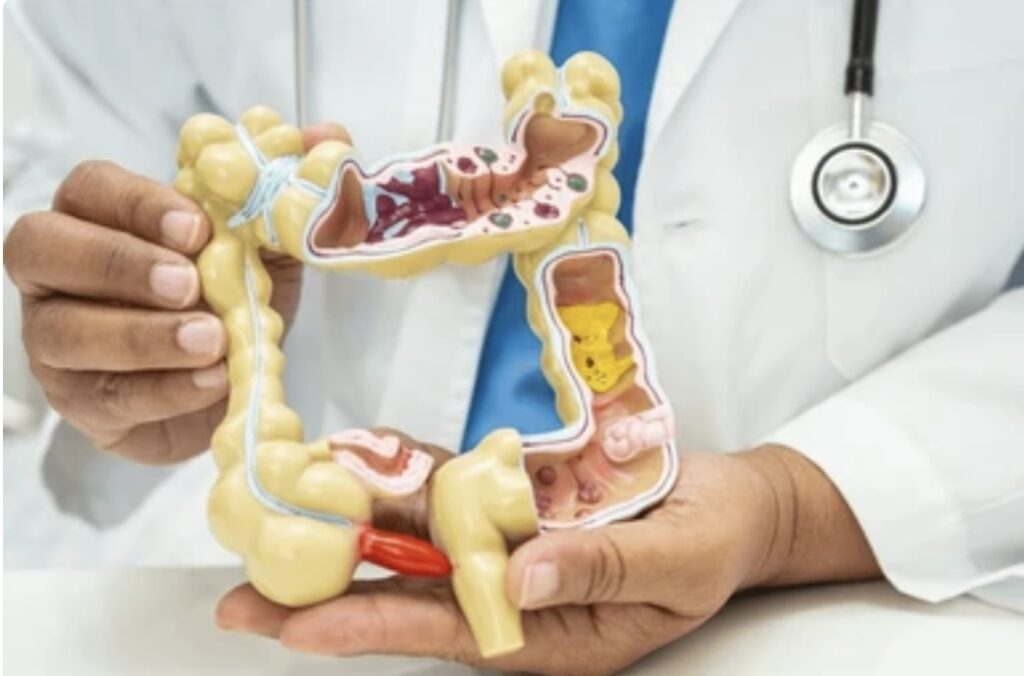Introduction

The digestive system is one of the most complex and crucial systems in the human body. It plays a vital role in breaking down food and absorbing nutrients, which are essential for maintaining energy levels, building tissues, and supporting overall bodily functions. Without a properly functioning digestive system, the body would struggle to extract the nutrients it needs to stay healthy. This article provides an in-depth look at the digestive system, its components, how it works, and common digestive disorders.
By understanding how your digestive system operates, you can make informed choices about your diet, lifestyle, and healthcare to improve your digestive health. Whether you’re curious about the biological processes behind digestion or seeking ways to improve gut health, this article will cover everything you need to know.
Overview of the Digestive System

The digestive system consists of a series of hollow organs and structures that work together to break down food, absorb nutrients, and expel waste. This system is critical not only for providing the body with energy but also for supporting immune function and overall health.
Key Functions of the Digestive System:
- Digestion: Breaking down food into simpler molecules.
- Absorption: Transporting nutrients from the digestive tract into the bloodstream.
- Excretion: Removing waste products from the body.
Structure of the Digestive System
The digestive system can be divided into two main categories:
- The Gastrointestinal Tract (GI Tract): A long, muscular tube that extends from the mouth to the anus. This is where food is broken down and nutrients are absorbed.
- Accessory Organs: These include the liver, pancreas, and gallbladder, which produce digestive juices and enzymes to help in the breakdown and absorption of food.
The Process of Digestion
Digestion is a multi-step process that starts as soon as food enters the mouth. The main goal of digestion is to convert food into usable forms of nutrients—such as amino acids, sugars, and fatty acids—that the body can absorb and use for energy, growth, and cell repair.
Step 1: Ingestion
Digestion begins when you take a bite of food. The food enters your mouth, where it is broken down into smaller pieces by chewing. Saliva, produced by salivary glands, contains the enzyme amylase, which begins the breakdown of carbohydrates into simpler sugars.
Step 2: Propulsion and Swallowing
Once the food is chewed and mixed with saliva, it forms a bolus, which is pushed to the back of the throat by the tongue and swallowed. The process of swallowing (or deglutition) involves a coordinated effort of muscles in the mouth, throat, and esophagus.
Step 3: Stomach Digestion
After swallowing, the bolus travels down the esophagus and enters the stomach. The stomach is a muscular organ where food is churned and mixed with stomach acids (mainly hydrochloric acid), enzymes, and mucus. The stomach lining produces pepsin, an enzyme that begins the breakdown of proteins.
Step 4: Small Intestine Digestion and Absorption
The partially digested food moves into the small intestine, where the majority of digestion and absorption occurs. The small intestine is made up of three parts: the duodenum, jejunum, and ileum. The pancreas secretes digestive enzymes into the small intestine that help break down fats, proteins, and carbohydrates. Bile, produced by the liver and stored in the gallbladder, helps emulsify fats for easier digestion.
In the small intestine, nutrients are absorbed through tiny hair-like structures called villi and microvilli. These structures increase the surface area available for nutrient absorption, allowing the body to extract essential vitamins, minerals, amino acids, and other nutrients.
Step 5: Large Intestine (Colon)
After nutrients have been absorbed, the remaining waste products, including undigested food and water, move into the large intestine. In the colon, most of the remaining water is absorbed, and the waste is compacted into stool. Beneficial bacteria in the colon also help ferment some of the remaining fibers.
Step 6: Excretion
Finally, the indigestible waste is expelled from the body through the rectum and anus in the form of feces. This is the final step of the digestive process.
Major Components of the Digestive System

The digestive system consists of several important organs, each of which plays a unique role in the breakdown and absorption of food.
The Mouth
The mouth is the entry point for food. It contains teeth, which grind food into smaller pieces, and the tongue, which helps mix food with saliva and pushes it toward the throat for swallowing. The salivary glands produce saliva, which contains the enzyme amylase, responsible for breaking down starches into sugars.
The Esophagus
The esophagus is a muscular tube that connects the throat (pharynx) to the stomach. It is responsible for moving food from the mouth to the stomach through a series of muscular contractions known as peristalsis.
The Stomach
The stomach is a hollow organ that stores food, breaks it down with digestive acids, and churns it into a semi-liquid substance known as chyme. It also secretes digestive enzymes such as pepsin, which begin the digestion of proteins.
The Small Intestine
The small intestine is the primary site of digestion and nutrient absorption. It consists of three parts:
- Duodenum: The first part, where bile and pancreatic enzymes enter the digestive tract.
- Jejunum: The middle part, where most nutrient absorption occurs.
- Ileum: The final part, where nutrients are absorbed into the bloodstream.
The Large Intestine
The large intestine, or colon, is where water and salts are absorbed, and the remaining material is compacted into stool. It is also home to a diverse population of beneficial gut bacteria that help in the fermentation of undigested fibers.
Accessory Organs
The Liver
The liver produces bile, a substance that helps break down fats in the small intestine. It also processes nutrients absorbed from the digestive tract and detoxifies harmful substances in the body.
The Pancreas
The pancreas produces digestive enzymes that break down carbohydrates, proteins, and fats in the small intestine. It also secretes insulin, a hormone that regulates blood sugar levels.
The Gallbladder
The gallbladder stores and concentrates bile produced by the liver and releases it into the small intestine to aid in fat digestion.
Enzymes and Their Role in Digestion
Digestive enzymes are proteins that speed up the chemical reactions needed to break down food. Different enzymes work at different stages of digestion to break down specific nutrients, including proteins, carbohydrates, and fats.
Key Digestive Enzymes
- Amylase: Produced by the salivary glands and pancreas, amylase breaks down starches into sugars.
- Pepsin: Produced in the stomach, pepsin breaks down proteins into smaller peptides.
- Lipase: Produced by the pancreas, lipase breaks down fats into fatty acids and glycerol.
- Lactase: Found in the small intestine, lactase breaks down lactose (milk sugar) into glucose and galactose.
- Proteases: These enzymes, including trypsin and chymotrypsin, break down proteins into amino acids.
Common Digestive Disorders
While the digestive system is remarkably efficient, it can be susceptible to a range of disorders that can impact its function. Here are some of the most common digestive disorders:
1. Irritable Bowel Syndrome (IBS)
IBS is a chronic condition characterized by abdominal pain, bloating, and irregular bowel movements, including diarrhea and constipation. The exact cause of IBS is unclear, but it may be related to stress, diet, or an imbalance in gut bacteria.
2. Gastroesophageal Reflux Disease (GERD)
GERD is a condition where stomach acid regularly flows back into the esophagus, causing symptoms like heartburn, chest pain, and difficulty swallowing. Over time, GERD can damage the esophagus lining.
3. Celiac Disease
Celiac disease is an autoimmune disorder in which the ingestion of gluten (a protein found in wheat, barley, and rye) triggers an immune response that damages the lining of the small intestine. This impairs nutrient absorption and can lead to malnutrition.
4. Crohn’s Disease
Crohn’s disease is an inflammatory bowel disease (IBD) that causes chronic inflammation of the digestive tract, leading to symptoms such as abdominal pain, diarrhea, fatigue, and weight loss.
5. Gallstones
Gallstones are hardened deposits of bile that form in the gallbladder. They can block the flow of bile, leading to pain, nausea, and digestive problems.
6. Lactose Intolerance
Lactose intolerance occurs when the body is unable to digest lactose, the sugar found in milk. This leads to symptoms like bloating, diarrhea, and gas after consuming dairy products.
Maintaining a Healthy Digestive System
A healthy digestive system is essential for
overall health and well-being. There are several lifestyle changes you can make to support your digestive system and prevent digestive disorders.
1. Eat a Balanced Diet
A diet rich in fiber, fruits, vegetables, lean proteins, and whole grains supports digestion and gut health. Fiber helps regulate bowel movements and promote healthy gut bacteria.
2. Stay Hydrated
Drinking plenty of water helps soften stool and promotes regular bowel movements. It also supports the digestion and absorption of nutrients.
3. Exercise Regularly
Physical activity stimulates the digestive system and helps prevent constipation. It also supports a healthy gut microbiome.
4. Avoid Overeating
Overeating can put stress on the digestive system and lead to indigestion or heartburn. Eating smaller, more frequent meals can reduce digestive strain.
5. Limit Processed Foods
Processed foods high in fat, sugar, and additives can disrupt digestion and lead to bloating, gas, and other digestive issues.
6. Manage Stress
Chronic stress can negatively affect the digestive system. Practicing stress management techniques, such as meditation or yoga, can help support digestive health.
Conclusion
The digestive system is an intricate network of organs and enzymes that work together to convert food into the nutrients our bodies need to function. By understanding how digestion works and how to care for the digestive system, you can promote better digestive health and overall well-being. Eating a balanced diet, staying hydrated, exercising regularly, and managing stress are all essential for maintaining a healthy digestive system.
Remember that if you experience persistent digestive issues, it’s important to consult a healthcare provider to diagnose and treat any underlying conditions.
References:
- NIH Digestive Diseases
- Mayo Clinic – Digestive Disorders
- WebMD Digestive Health
- Cleveland Clinic – Digestive System
Discover more from ZOOLOGYTALKS
Subscribe to get the latest posts sent to your email.


Pingback: PANCREATIC GLAND: STRUCTURE AND FUNCTION - ZOOLOGYTALKS